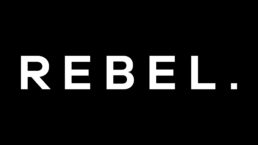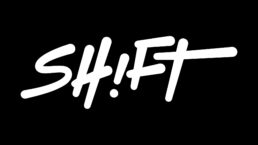You’ve carried the idea through in a very creative way, reflecting the nature of Dr Aron’s original experiment but with cool camera work and editing. Please tell us about the process of developing the film – did a lot of it evolve in the edit?
The style of the film is really down to Paul Kirsop, my DOP. I wanted the film to look true to the idea of being a ‘scientific experiment’ – a sterile environment where the emotion, connection and characters would provide the colour and warmth.
He pitched shooting it all on remote cameras and I think that is what gives the piece its edge. We never highlight that choice in the film, but you feel it inherently through the footage. I love the mix that creates – the intimate, warm connections seen through a formal, cold and sterile lens.
It highlights for me one of the most interesting things about the way the film developed which is the experiment and the film becoming two deeply separate things. We are observing and not involved and that heightens the intimacy between the couple.
I had an idea of how I wanted to build the edit, but wanted to be led by the results of the experiment. The piece found its emotional spine in the edit. (I was lucky to have Sacha Szwarc from Speade working with me who was so important to its development.)
I had always wanted the questions to be subtitled and not the answers but had thought that the strongest way to drive the edit would be to watch shifting body language, detailed nervous ticks and awkward attempts to answer the questions.
Instead, in the edit, we became really taken by watching the reactions of the other participant as their partner spoke. It became a much stronger approach. You feel the weight of the answer through their eyes and their reaction. Realising this was a turning point for how we built the film.
What were the main challenges of the production and how did you resolve them?
I really wanted the experience to start as soon as the participants arrived at the studio. We needed to cultivate an environment that would set the tone for the cold, lab-style space and also relax them into the idea of speaking openly to their partner without being too aware of it being filmed.
So much depended on them not seeing the full extent of our video set up and of course not meeting their partner until they were on film.
We had an amazing space at Dalston Pier, but it was all one large warehouse. One of the biggest challenges was figuring out an effective way to divide that space up.
We must have built 30+ flats to create a rabbit warren around the studio to separate the different sections and ensure that the participants could move around without bumping into each other, or a member of crew…turning the large space into an isolated studio, a gallery to control the cameras, a make up room and two separate green rooms.
Also the reel-to-reel player kept breaking!
How did you go about recruiting subjects and how did you match them together.
We had a really tight turn around and were keen to get a varied mix of participants, so we spread the word as much as we could through street casters, friends of friends and job sites, with just two questions:
1. Are you single and looking for love?
2. Are you free on Tuesday night?!
Luckily we got a great response.
Before we matched them up, we asked them all what they look for in a partner and that influenced who they were matched with. But often the idea wasn’t to match them with the most obvious choice.
It was important that we remained true to Aron’s experiment which was about growing connection and not immediate attraction. To truly experiment that we had to mix as much as we matched and watch the relationship blossom authentically through the strength of the experiment.
How did you manage to capture the intimacy without being too intrusive?
I’d always wanted to keep the crew as unobtrusive as possible. Paul Kirsop (DP) suggested using remote cameras which was perfect as it allowed us to fully leave the room.
We then divided up the studio space to separate the participants from the crew entirely throughout their entire time on location. The only contact the participants had was with Amy, our make-up artist, Burning Reel producer Cal Gordon and me.
Strangely enough, however, the thing that drives the intimacy the most throughout the film, wasn’t through directly cultivating an intimate environment, but rather by doing the opposite… the space was vast and cold and the lack of intimacy of the space and the set up creates a much bigger intimacy and stronger connection between the couples.
Also, a key thing was that I deliberately didn’t over-direct. I gave them a few simple instructions and then left them in a room to figure the rest out. As a result, they have this immediate connection through working together to get through this strange situation they’re in.
Is it too soon to know whether any of your chosen people fell in love? Or was it simply good acting?
A lot of people have asked me if anyone went on to meet again. Some people exchanged numbers and went on for a drink afterwards, but beyond that I’m kind of happier not knowing!
The film was about connection and it really opened up to that in a way that, I feel, make the details unimportant. That’s why we didn’t subtitle everything – it doesn’t matter what their responses were, what’s more interesting and touching is that we can see when they affected their partner in some way and how their connection grows. Mostly, their moment together remains theirs and not ours.
What they chose to share with their partner is personal and intimate and we are viewing that moment, not involving ourselves with what they’re saying.
Anything else you’d like to share?
Just a big thank you to Cal and Burning Reel for their support and Seafret and Sony for the music and opportunity to make something fun and interesting. And of course a huge thank you to Arthur Aron for the inspiration.











